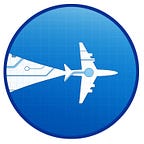Scheduled Checks and Reactive Maintenance — The Enemy of Airline Revenue
The business goal for an airline is to have aircraft in the air with little to no downtime in order to maximize revenue — especially in a price sensitive market with margin pressure. However, when problems with aircraft occur, because of the dated, fragmented systems being used for diagnosis, it’s difficult to respond to failures in a coordinated, timely response. The current method is strikingly ineffective and simply can’t support the rising consumer demand for flights, resulting in far too many service interruptions.
Legacy Troubleshooting Costs Billions
Legacy maintenance relies heavily on scheduled checks. Presently, aside from ensuring an aircraft is safe for flight, scheduled checks are necessary to keep aircraft reliable and flying as much as possible. These scheduled checks are mandated by aircraft manufacturers based on failure predictions of specific parts and systems aboard an aircraft. When parts fail outside of the routine maintenance a service interruption occurs causing a flight delay or cancellation. These technical service-interruptions directly account for a loss of roughly $1.5 billion annually, with potential indirect losses in the $10s of billions. Total service interruptions to US airlines alone account for a loss of $8 billion annually, with ripple effect loss of $31 billion to passengers and the US economy, and immeasurable loss of goodwill among commercial passengers.
Current Methods Cannot Keep Up With Growing Consumer Demand
To combat the issue of technical service interruptions, the legacy maintenance practice is to optimize scheduled checks to mitigate unscheduled maintenance required on the aircraft. In theory it’s a sound idea, but in practice it falls short. Parts and systems operate differently on like aircraft for a number of reasons, and scheduled maintenance simply isn’t enough to accommodate outliers. When a failure does occur, depending on its nature, the aircraft might have to be immediately grounded until a proven fix is in place — a pricey trade-off as the average cancellation costs and airline $125,000.
In order to improve the effectiveness of this model, the number of necessary checks would have to increase substantially, thereby increasing the ground time of the aircraft and cutting into the profits of the airline.
Additionally, in order to keep up with the growing consumer demands, the aviation landscape has shifted from a model where large aircraft fly few routes daily, allowing plenty of ground-time and padding for maintenance, to a model where smaller aircraft fly much more frequently — four or five routes per day with much less ground time between legs. The new model does not allow for much wiggle-room in maintenance, and often leads to delays.
The Perfect Model
The perfect model is to fix an aircraft in one maintenance visit, and if that can’t be achieved, to track all of the relevant fault information through the life of the problem in order to catch a lingering fault. The end goal is to diagnose and fix failures as quickly as possible to avoid grounding an aircraft. Yet, for even the most seasoned maintenance teams, working on a fix for a failure is a complicated, time-consuming process. Issues often arise during the troubleshooting and work phases because the fragmented nature of the data available for assessing a situation makes it difficult to get the full scope of a failure. Due to the lack of data utilization, final fixes can take several days with multiple service interruptions occurring in that time.
The Aermetric Solution: Proactive Maintenance
Proactive maintenance, backed by predictive modeling has been long overdue, and would solve most of the problems facing legacy maintenance programs. But, though the industry is ripe with the data necessary for predictive maintenance, up until now, the necessary technology did not exist to support such a program so no proven predictive system exists. Aermetric aims to change that — with its first in class predictive maintenance platform.
Click here to see how our predictive system competes against the legacy maintenance approach.
Aermetric is empowering aircraft operators to take control of their data. To learn more visit us at www.aermetric.com or check out our Medium Page!
